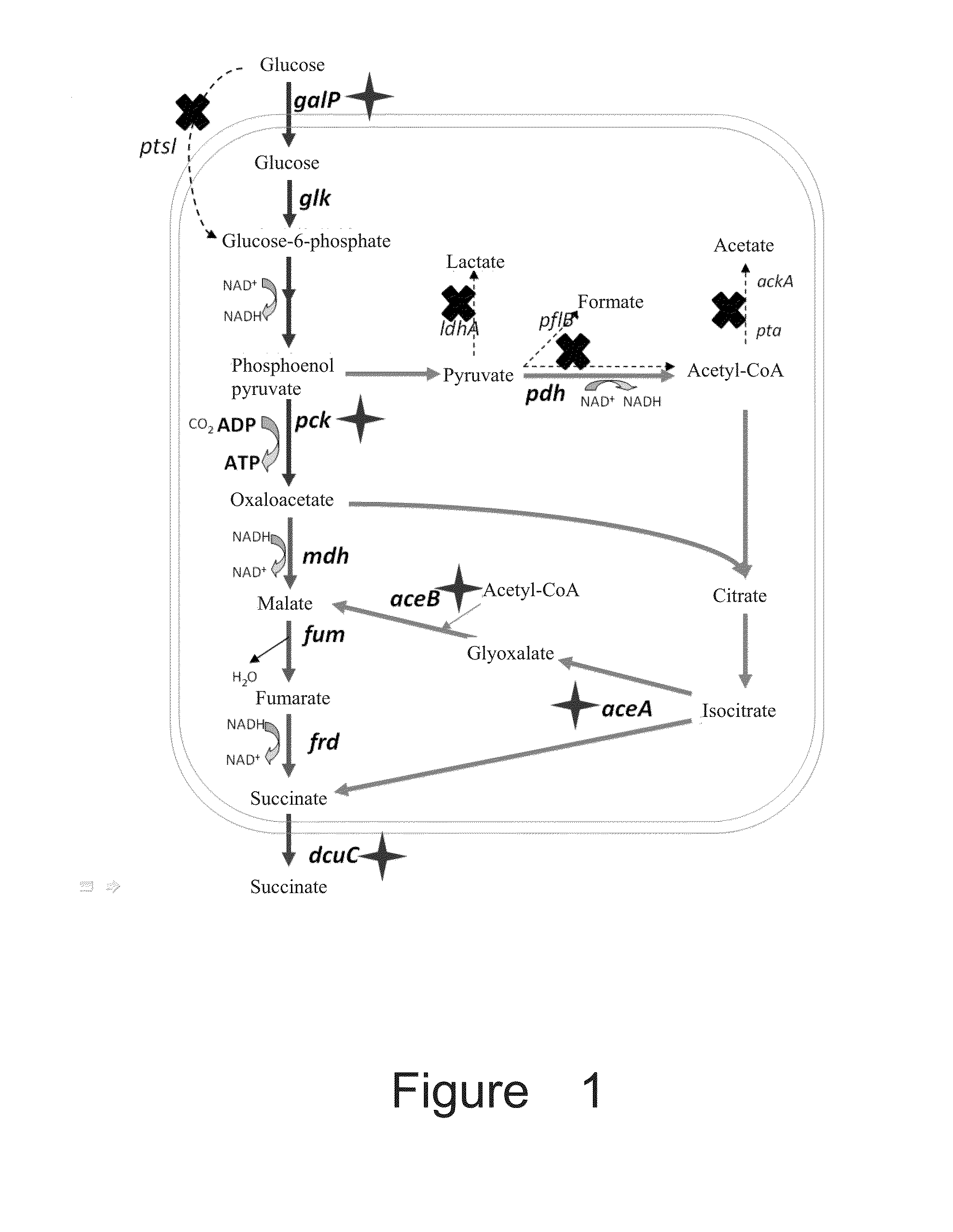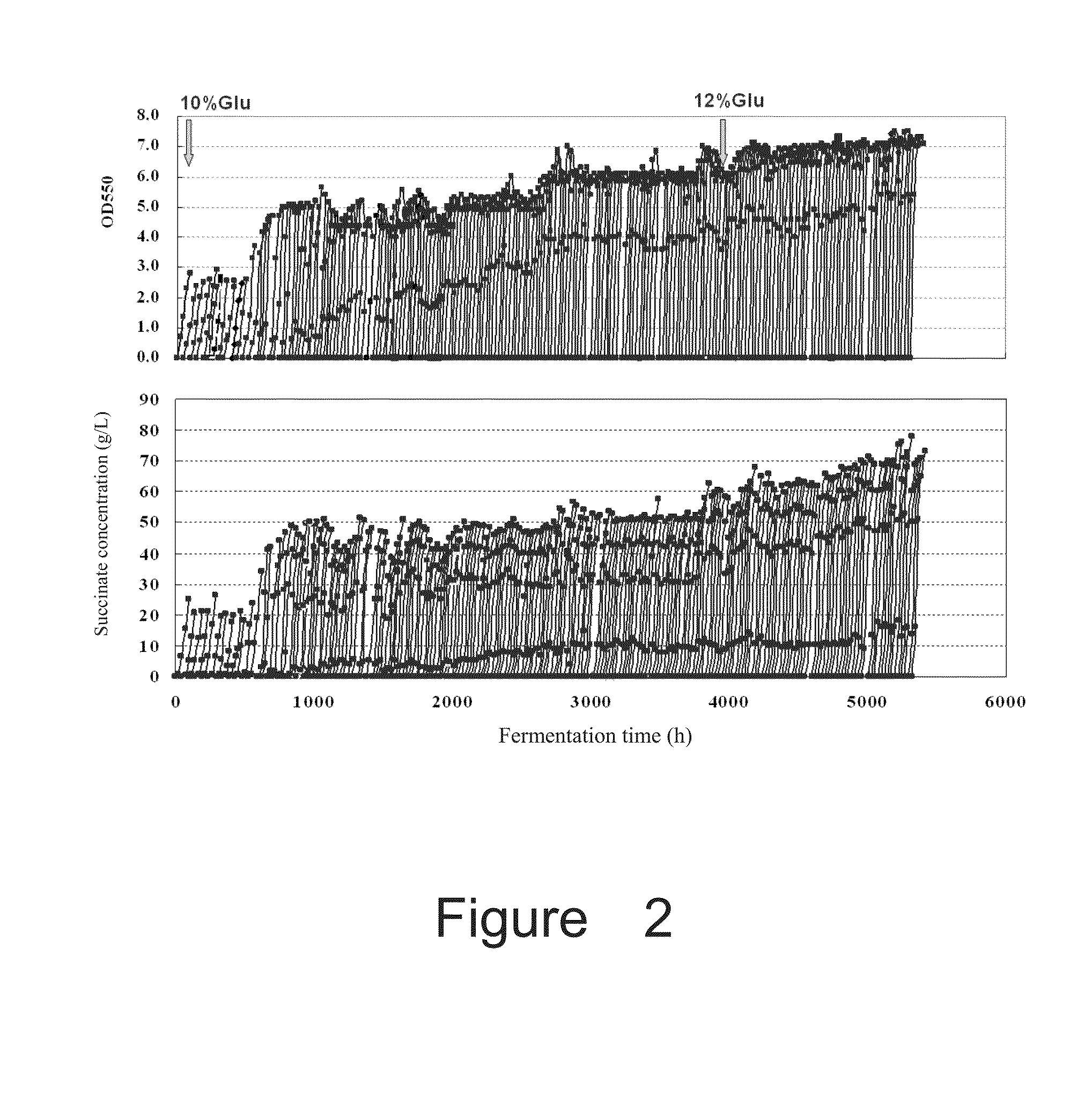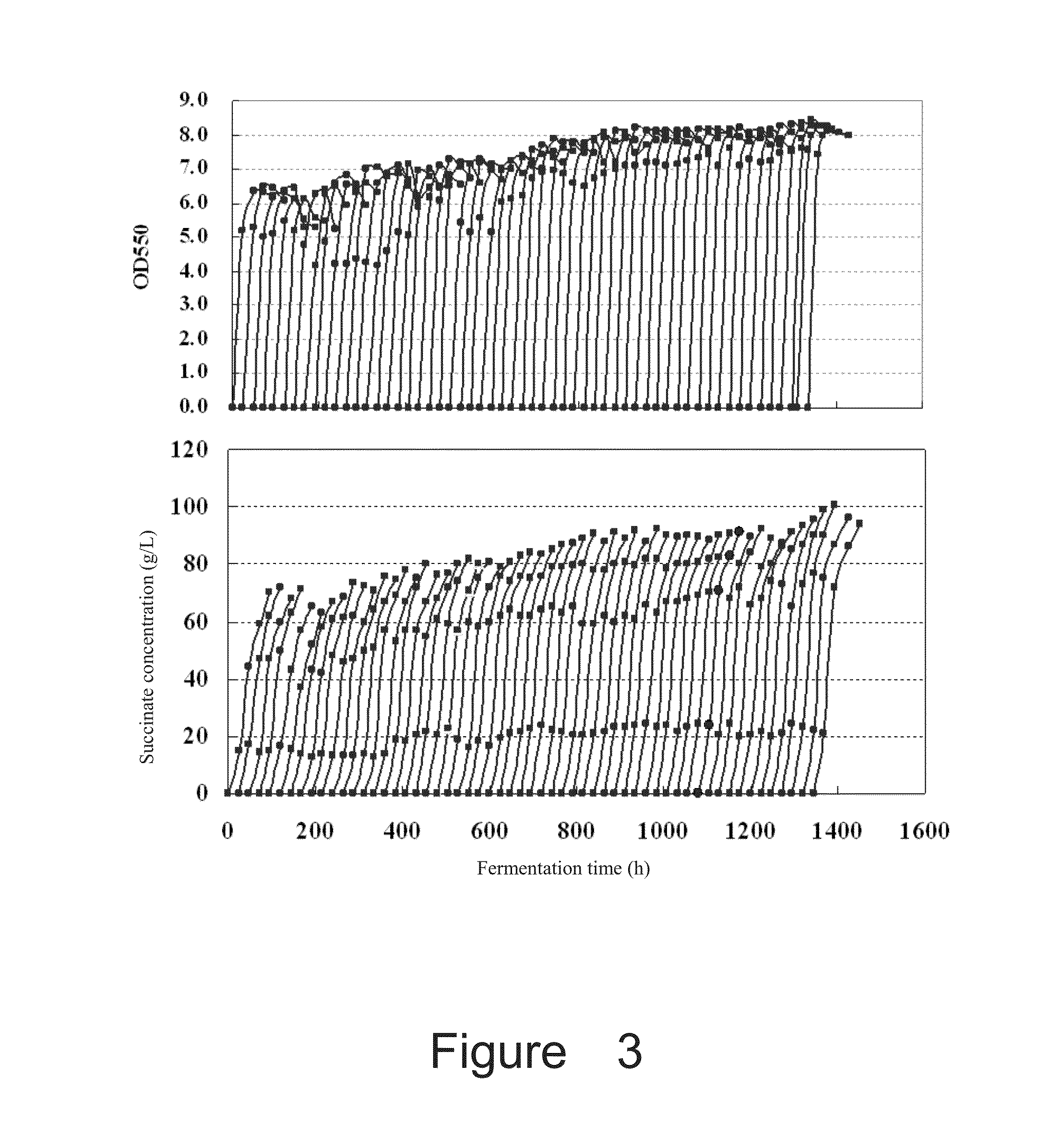Recombinant escherichia coli for producing succinic acid and application thereof
- Summary
- Abstract
- Description
- Claims
- Application Information
AI Technical Summary
Benefits of technology
Problems solved by technology
Method used
Image
Examples
example 1
Construction of Recombinant E. coli NZ-037 Strain
[0128]The construction of recombinant E. coli NZ-037 (Table 1) included the following eight steps:
[0129](1) Deletion of lactate dehydrogenase gene ldhA
[0130](1-1) Plasmid pXZ-CS was firstly constructed for gene deletion, modulation and integration.
[0131]Four steps were applied to construct plasmid pXZ-CS: First step, a chloramphenicol resistance gene was amplified by using the plasmid pACYC184 DNA (Mok et al., 1991. Nucleic acids Res 19:2321-2323) as template with primer set 184-cat-up (SEQ ID No:7) and 184-cat-down (SEQ ID No:8). The resulting PCR product with 994 bp was designated as fragment I, containing the chloramphenicol gene promoter sequence.
[0132]PCR system: 10 μl of New England Biolabs Phusion 5× buffer, 1 μl of dNTP (each dNTP, 10 mM), 20 ng of DNA template, and primer set (each of 10 μM), 0.5 μl of Phusion High-Fidelity DNA polymerase (2.5 U / μL), 33.5 μl of distilled water, in 50 μl of total volume.
[0133]PCR cycles: 1 cyc...
example 2
Production of Succinate by Recombinant Strains Suc-T110, NZ-035, NZ-036 and NZ-037
[0181]The seed medium consists of (H2O as solvent):
[0182]Major elements: glucose 20 g / L, KH2PO4 3.5 g / L, K2HPO4 6.55 g / L, (NH4)2HPO4 3.5 g / L, MgSO4.7H2O 0.12 g / L and betaine-KCl 0.15 g / L, and
[0183]Trace elements: FeCl3.6H2O 1.5 μg / L, CoCl2.6H2O 0.1 μg / L, CuCl2.2H2O 0.1 μg / L, ZnCl2 0.1 μg / L, Na2MoO4.2H2O 0.1 μg / L, MnCl2.4H2O 0.2 μg / L, H3BO3 0.05 μg / L.
[0184]Fermentation medium was the same as the seed medium, except for containing 50 g / L glucose and 100 mM KHCO3 unless stated otherwise.
[0185]The anaerobic fermentation of the strains Suc-T110, NZ-035, NZ-036 and NZ-037 was carried out under the conditions as following:
[0186](1) Seed culture: 100 ml of seed medium in a 250 ml flask was sterilized at 115° C. for 15 min. Suc-T110, NZ-035, NZ-036 and NZ-037 were grown by transferring pre-inocula (an inoculum of 1% (v / v)) into the seed medium, at 37° C. with shaking at 100 rpm for 12 h to obtain the seed cultu...
example 3
Production of Succinate by Fermentation of Recombinant E. coli NZ-037 Using Sodium Salts
[0190]The components of the seed medium consisted of (H2O as solvent):
[0191]Major elements: glucose 20 g / L, NH4H2PO4 0.87 g / L, (NH4)2HPO4 2.63 g / L, MgSO4.7H2O 0.18 g / L, Betaine-KCl 0.15 g / L, and
[0192]Trace elements: FeCl3.6H2O 2.4 μg / L, CoCl2.6H2O 0.3 μg / L, CuCl2.2H2O 0.15 μg / L, ZnCl2 0.3 μg / L, Na2MoO4.2H2O 0.3 μg / L, MnCl2.4H2O 0.5 μg / L, H3BO3 0.072 μg / L.
[0193]The fermentation medium is the same as the seed medium, except for containing 100 g / L glucose and 35 mM sodium bicarbonate. The neutralizer was 2.4 M sodium carbonate and 1.2 M sodium hydroxide.
[0194]Seed cultures, fermentations and analysis were the same as described in Example 2.
[0195]Results: after 96 h fermentation, the titer of succinate was 226 mM, with a yield of 1.27 mol / mol.
PUM
 Login to View More
Login to View More Abstract
Description
Claims
Application Information
 Login to View More
Login to View More - R&D
- Intellectual Property
- Life Sciences
- Materials
- Tech Scout
- Unparalleled Data Quality
- Higher Quality Content
- 60% Fewer Hallucinations
Browse by: Latest US Patents, China's latest patents, Technical Efficacy Thesaurus, Application Domain, Technology Topic, Popular Technical Reports.
© 2025 PatSnap. All rights reserved.Legal|Privacy policy|Modern Slavery Act Transparency Statement|Sitemap|About US| Contact US: help@patsnap.com



